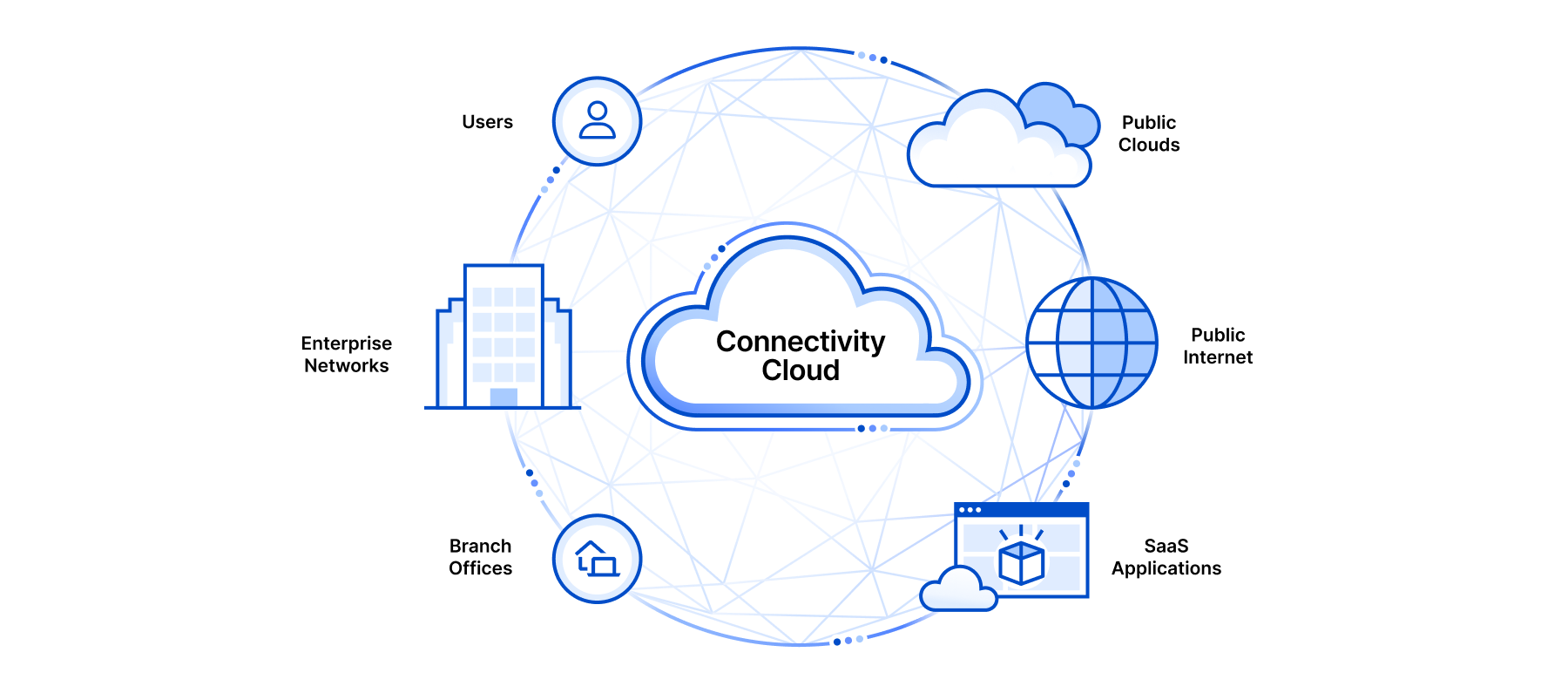
The best part of our job is the time we spend talking to Cloudflare customers. We always learn something new and interesting about their IT and security challenges.
In recent years, something about those conversations has changed. More and more, the biggest challenge customers tell us about isn’t something that’s easy to define. And it’s definitely not something you can address with an individual product or feature.
Rather, what we’re hearing from IT and security teams is that they are losing control of their digital environment.
This loss of control comes in a few flavors. They might express hesitance about adopting a new capability they know they need, because of compatibility concerns. Or maybe they’ll talk about how much time and effort it takes to make relatively simple changes, and how those changes take time away from more impactful work. If we had to sum the feeling up, it would be something like, “No matter how large my team or budget, it’s never enough to fully connect and protect the business.”
Does any of this feel familiar? If so, let us tell you that you are far from alone.

Reasons for loss of control
The rate of change in IT and security is accelerating, bringing with it dreaded complexity. IT and security teams are responsible for a wider variety of technological domains than they were in years past. Recent research from Forrester confirms these shifts: of teams responsible for securing in-office, remote, and hybrid workers, 52% only took that on in the past five years. Meanwhile, 46% gained responsibility for managing and securing public cloud applications in that time, and 53% were handed the thorny issue of regulatory compliance.
IT and security teams have been handed a monumental challenge: connect remote teams, on-premises teams and infrastructure, multiple cloud environments, SaaS apps, and more, so they function like a single, secure environment. But doing so is difficult for multiple reasons:
In most businesses, proprietary infrastructure, unique compliance needs, and semi-compatible processes and configurations make it hard to connect clouds, SaaS apps, web apps, and on-prem infrastructure. Those domains simply weren’t built to work together easily and securely.
Conway’s Law tells us that systems tend to match the communication structure of their organization. And, through no fault of their own, many IT and security teams are quite siloed.
The circumstances are often ripe for IT and security to get bogged down with workarounds and tangled interdependencies.
Luckily, we’ve found a way forward.

Welcome to the connectivity cloud
Frequently, an important part of customer conversations is being able to read between the lines. When customers speak about loss of control, they seem to be quietly wishing for something they think doesn’t exist. What they want is a connective tissue for everything IT and security are responsible for — something that reduces complexity by working with everything in the environment, being available everywhere, and performing whatever security, networking, and development functions are needed.
Further research confirmed our suspicions. Surveys of IT and security leaders indicate that 72% would highly value a secure “any-to-any” cloud platform. And they said they would invest an average of 16% of their entire IT and security budget in such a platform.
That got us to thinking — what exactly would that sort of cloud platform look like? How would it accomplish everything it had to?
We’ve got answers to share: a connectivity cloud.
A connectivity cloud is a new approach for delivering the many services companies need to secure and connect their digital environment. It’s a unified, intelligent, platform of programmable cloud-native services that enable any-to-any connectivity between all networks (enterprise and Internet), cloud environments, applications and users. It includes a huge array of security, performance, and developer services — not with an eye to replace everything everywhere, but with the ability to fit in wherever needed and consolidate many critical services onto a single platform.
A connectivity cloud is built around four fundamental principles.
Deep integration — Organizations rely on the Internet to connect various elements of their digital environment with their workers, partners and customers. A connectivity cloud is integrated natively with the Internet and with enterprise networks, offering secure, low-latency, infinitely scalable connectivity between every user, application, and infrastructure. It’s as fast and straightforward as the Internet at its best, without the risk or uncertainty.
Programmability — Every enterprise digital environment has proprietary infrastructure, multiple clouds, unique compliance needs, and other highly specific tooling, processes, and configurations. A connectivity cloud’s architecture provides limitless interoperability and customizable networking, letting it adapt to those unique needs while still providing consistent user experiences and efficient management.
Platform intelligence — Organizations need a wide variety of services to connect and secure everything in their digital environment. But integrating everything is onerous, and trying to manage it all causes inefficiency and security gaps. A well-architected connectivity cloud has a wide range of services built in at a foundational level, and analyzes extremely high volumes and varieties of traffic in order to automatically update intelligence models.
Simplicity — Too many IT and security services means too many dashboards, leading to inefficiency, poor visibility, and alert fatigue. While 100% consolidation onto one platform isn’t the answer, a connectivity cloud greatly reduces tool sprawl and dashboard overload by managing much more of the IT environment from a single pane of glass.
With these qualities, the connectivity cloud lets you add new services to your digital environment without losing even more control — and also helps restore control to what you’ve already got.

Cloudflare’s connectivity cloud
We’ll admit we’re predisposed to find those four qualities particularly important. From our earliest days, we’ve built our services based on the principles of integration, programmability, platform intelligence, and simplicity. And now, our overall portfolio is comprehensive enough to help customers achieve these benefits when tackling a huge array of security and IT needs.
Because of this approach, we’re proud to say that Cloudflare is the world’s first connectivity cloud.
But don’t take our word for it. Here are a few examples of customers that have used Cloudflare to help resolve their own crises of control:
Conrad Electronic: Secure access for a global distributed workforce
A connectivity cloud’s programmability, deep network integration, and built-in intelligence make it ideal for delivering secure access to corporate resources.
The electronics retailer Conrad Electronic told us, “Just keeping people online created a series of administrative bottlenecks.” Nearly half of their 2,300 employees need to access corporate applications remotely. Enabling that access was burdensome: they had to deploy and configure VPN clients for each user.
Conrad Electronic now uses Cloudflare’s connectivity cloud to provide secure remote access to hundreds of corporate applications. Their management burden is significantly lower, with their team telling us they now have much more time per month to devote to improving their web operations. What’s more, their security posture is stronger: “We can restrict specific individuals or secure sensitive areas with a mouse click. Not having to maintain 1,000 VPN profiles improves our security and saves us time and money.”
Carrefour: Deliver and manage trusted customer-facing applications
A connectivity cloud’s threat intelligence, network integration, and unified interface also make it excellent at closing securing gaps and enabling secure application delivery on a global scale.
The multinational retail and wholesaling company Carrefour has a thriving and rapidly growing ecommerce presence. However, when cyber attacks ramped up, simply growing their security stack didn’t help. As their security team told us, “The interlacing of multiple tools complicated coordination and control of the architecture…additionally, the lack of integration across tools made investigating and resolving security and performance issues a complex and time-consuming effort.”
As part of their broader security transformation, they adopted Cloudflare’s connectivity cloud to prevent web exploits, zero-day threats, and malicious bot attacks. Doing so allowed them to replace five security tools from different vendors. And since then, they’ve reduced their incident resolution time by 75%.
Canva: Build innovative applications
Finally, a connectivity cloud’s programmability and network integration help it power innovative development in almost any context.
The global design juggernaut Canva is one example. Previously, they used a variety of developer platforms to run custom code at the network edge. But they found those services too time-consuming to use, and ran into limitations that held their innovation back.
Cloudflare’s connectivity cloud has become “a critical part of our software” They use the connectivity cloud’s developer services to build and run custom code, optimize page delivery for SEO, and time-limit content access. Recently, they told us “Thanks to Cloudflare, we can focus on growing our product and expanding into new markets with confidence, knowing that our platform is fast, reliable, and secure.”
What’s more, their experience has led to them also adopting Cloudflare’s for secure access and application delivery — a hugely gratifying example of a connectivity cloud operating at full power.
Learn more about the connectivity cloud
Customers are the inspiration for our innovation, and our connectivity cloud vision is no exception. We live to make things easier, faster, more secure and more connected – and it’s amazing to see how the connectivity cloud helps reduce complexity and increase security.
You can learn more about the connectivity cloud here — but we hope that’s just the beginning. Reach out to all of us at Cloudflare to ask questions and make suggestions — I look forward to continuing the conversation discovering ways we can continue to help customers on their secure, connected journey.



